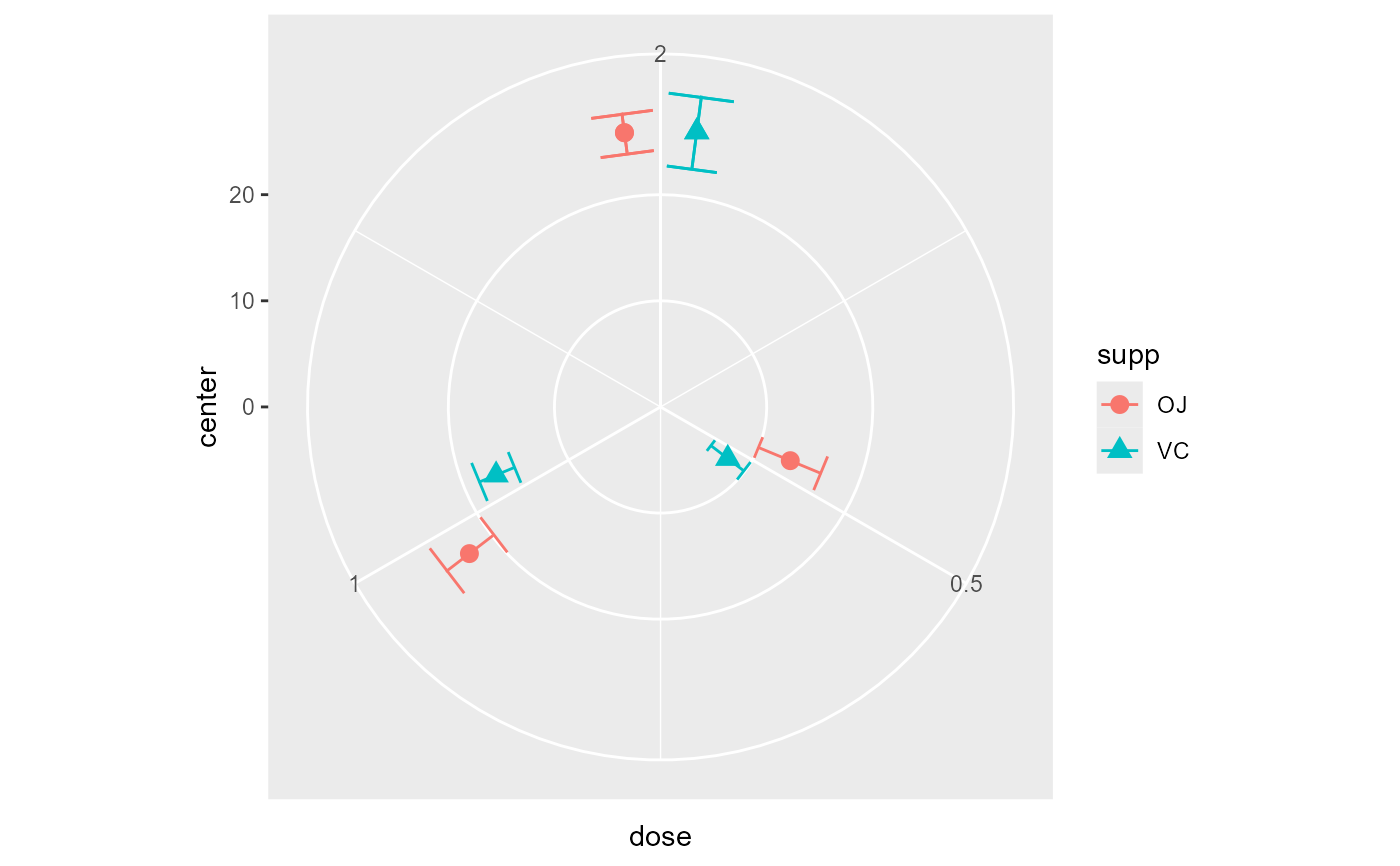superbPlot 'circularpoint' layout
Source:R/functionsPlotting_circular.R
superbPlot.circularpoint.Rdsuperb comes with a few circular layouts for making plots. It produces ggplot objects that can be further customized.
It has these parameters:
Arguments
- summarydata
a data.frame with columns "center", "lowerwidth" and "upperwidth" for each level of the factors;
- xfactor
a string with the name of the column where the factor going on the horizontal axis is given;
- groupingfactor
a string with the name of the column for which the data will be grouped on the plot;
- addfactors
a string with up to two additional factors to make the rows and columns panels, in the form "fact1 ~ fact2";
- rawdata
always contains "DV" for each participants and each level of the factors
- pointParams
(optional) list of graphic directives that are sent to the geom_bar layer
- errorbarParams
(optional) list of graphic directives that are sent to the geom_superberrorbar layer
- facetParams
(optional) list of graphic directives that are sent to the facet_grid layer
- radarParams
(optional) list of arguments to the radar coordinates (seel
coord_radial()).- xAsFactor
(optional) Boolean to indicate if the factor on the horizontal should continuous or discrete (default is discrete)
Value
a ggplot object
Examples
# This will make a plot with bars
superb(
len ~ dose + supp,
ToothGrowth,
plotLayout="circularpoint"
)
 # if you extract the data with superbData, you can
# run this layout directly
#processedData <- superb(
# len ~ dose + supp,
# ToothGrowth,
# showPlot = FALSE
#)
#
#superbPlot.circularpoint(processedData$summaryStatistic,
# "dose",
# "supp",
# ".~.",
# processedData$rawData)
# if you extract the data with superbData, you can
# run this layout directly
#processedData <- superb(
# len ~ dose + supp,
# ToothGrowth,
# showPlot = FALSE
#)
#
#superbPlot.circularpoint(processedData$summaryStatistic,
# "dose",
# "supp",
# ".~.",
# processedData$rawData)